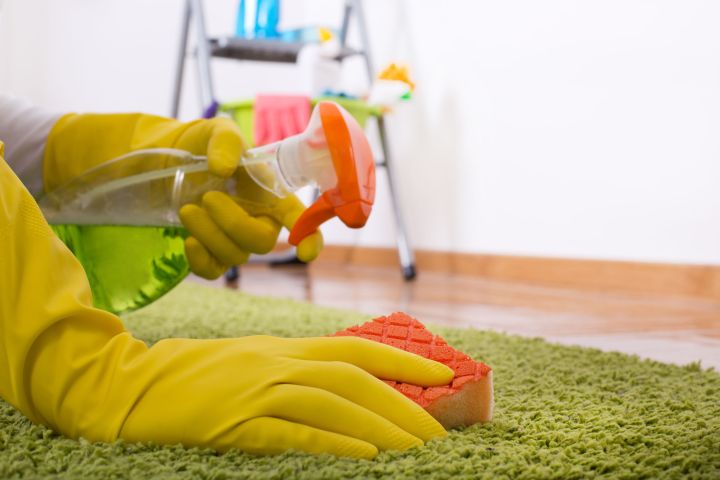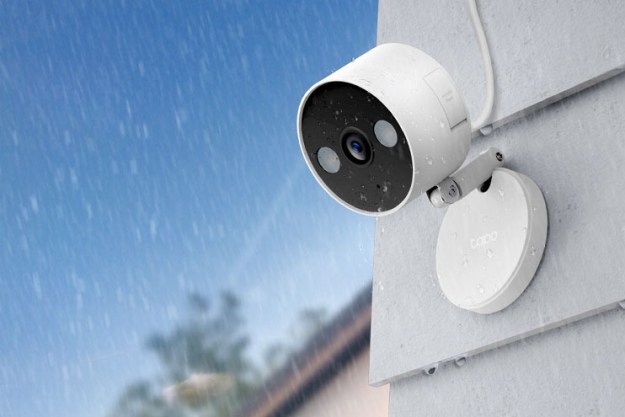
There isn’t a single solution for removing bloodstains across the board, however. Depending on whether the stain has had time to set and the type of fabric involved, there are a several approaches to either fully remove — or at least sufficiently fade — the stain. Using these tried-and-true methods, you should be able to salvage your favorite t-shirt as well as your carpet from a seemingly indelible bloodstain.
Clothes

When it comes to bloodstains, time is of the essence. If a stain is pretreated immediately, it should be relatively easy to remove. However, the longer a stain has to set, the harder it will be to fade or completely diminish. With any fresh stain, first and foremost, blot the stain with a dry towel to remove the excess liquid. This should help going forward.
If the stain is relatively small, simply blot the affected area with cold water — not hot water, not warm water — as this will keep the stain from setting. If the stain is fairly large, place the item in cold water and let it soak for 3 or 4 four hours.
Dishwashing liquid or detergents can be added to help with the prewash soak, though this may not be enough to remove some deeper stains.
The next part of the process depends on the color of the fabric. For lighter fabrics, add two tablespoons of ammonia or hydrogen peroxide directly to the stain. Be warned: Ammonia and hydrogen peroxide may bleach darker articles of clothing. With darker fabrics, soap or detergent can be applied directly to the stain. Work the solution into the stain by massaging the stain with your fingers or simply rubbing the material against itself. Next, wash the item as you normally would.
If this doesn’t remove the stain, try adding roughly one cup of salt to two quarts of water (mix well) and allow the clothing to soak for about half an hour. After 30 minutes, rub the stained portion of the fabric against itself and see how easily the stay comes out. With more delicate fabrics, use a cold damp towel and gently rub the stain to prevent stretching or damaging the material. Next, wash the item as you normally would. If the stain is still present after the wash, repeat the process and the prewash process.
There are several other tricks for treating bloodstains on clothing, including white vinegar and club soda. Pour either of the two directly on the affected area. Let the solution settle into the stain for roughly 10 minutes, then dab the area with a dry towel.
Carpet

As with bloodstains on clothing, the first step in combatting fresh bloodstains on carpet is to remove the excess moisture. This can be be done using a dry towel. If the stain is set, using a steel or nylon brush and a little cold water, gently rub to the stain to loosen it. Keep in mind that which utensil you choose depends on how delicate the fabric is.
Once set stains have been loosened and fresh stains have been dabbed for excess, add one tablespoon of dishwashing detergent to two cups of cold water. Using either a sponge or cloth, begin to scrub the stain in small circular motions with the detergent solution. Remember to start on the outside of the stain and work your way toward the center. This will keep you from inadvertently making the stain bigger.
Once the area has been sufficiently scrubbed, dab the portion of carpet with a dry towel to remove the excess solution. Repeat the scrubbing and dabbing process until the stain is removed.
Depending on the severity of the stain and the color of the carpet, this may not be enough to remove the bloodstain. Ammonia and hydrogen peroxide can also be used to lighten or diminish stains on light-colored carpet, while less acidic options such as soaps and soda waters can be used on darker carpets. In this instance, mix one tablespoon of ammonia — or hydrogen peroxide, liquid soap, etc. — with a half cup of warm water and apply the solution directly to the stain. Next, scrub the stain with cold water and dab the area dry with a towel. Repeat these steps until the stain has been fully or sufficiently removed.
Upholstery

The process for removing bloodstains on upholstery is similar to the process of removing bloodstains from carpet. If the stain is set, start by using a soft brush — a toothbrush is fairly ideal for delicate materials — to loosen the stain. Using a sponge with cold water, begin to blot the stain. Again, start on the outside of the stain and work your way toward the center.
Next, add some club soda to a cup of cold water and pour the solution directly on the stain. Then, continue to blot the affected area with the sponge. Repeat this step until the stain is either gone or until the process becomes ineffective.
Deeper and darker stains may require further treatment, and you’ll need a spray bottle for best results. Remember to properly rinse the bottle beforehand. Add two cups of cold water with a small amount of glycerin or laundry detergent. Then, pour this mixture into the rinsed spray bottle.
Spray the solution directly onto the stain — three squirts at a time ought to be sufficient. Then, using your sponge, gently scrub the stain. Complete this process as needed, then pour cold water onto the affected fabric and dab dry with a towel or cloth.
Talcum powder is also an option for removing fresh stains from upholstery. Using only talcum powder and water, work the two ingredients into a fairly thick paste. Cornstarch or cornmeal can be substituted for talcum powder as well. Next, apply the paste to the entire stain. The paste should help pull the blood to the surface. Once it has had time to dry, simply brush the paste away. You may have to try some of the aforementioned processes afterward to achieve your desired result.
Editors' Recommendations
- Check out these Ring video doorbell alternatives that don’t require a subscription
- The ‘Look and Talk’ feature means you don’t have to say ‘Hey Google’
- Don’t be surprised that Amazon workers are watching footage from the Cloud Cam


